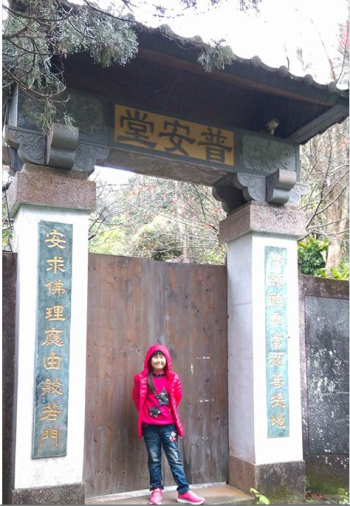Puan Temple
|
Introduction |
Puan Temple was built in Zutian Village of Tucheng during the Japanese Ruling Period. Pioneers came here to settle and reclaim land since Qing Dynasty and it was one of the earliest temples for Tucheng Matzu on Tianquan Road. In terms of religious distinction, Puan Temple belongs to Taiwan Zhaijiao (a sect of Buddhism) and such religion differs from the traditional Buddhism as the person on religious practice could be vegetarian and recite Buddhism scripture at home. Puan Temple features the combination of civil housing with temple building, where the elegant red-brick architecture highlights the green mountain with a lovely and tranquil scenery. It is one of the only Zhaijiao buildings remaining in Great Taipei area. There are many green maple trees planted around Puan Temple and are very beautiful when the maple leave turn red in autumn time, and hence "Puan Temple Autumn Scenery" is one of the eight great views in Zutian. The temple gate is very unique and used as the scene for the Chinese martial artist to take refuge in religious life in movies of Chinese martial operas.
Ancient Temple Gate
Reference: Wikipedia, publication on Matzu Protecting Ancestral Land
|
The Past of Puan Temple |
Uncle Sun from the Office of General Affairs who is also the alumnus of Dingpu Elementary School has visited Puan Temple. Longquan Road was covered with rocks and mud in some 40 years ago and was not paved with asphalt like today. Children living in that area often visited Puan Temple after school or on vacation. The Puan Temple was nearly built with thatch and bamboo only and only one or two rooms were built of brick. Uncle Sun described: "Some people were on religious practice inside but they never interfered with children playing there. The courtyard was trimmed well and neatly and there were many wild passion fruits for people to enjoy. Additionally many animals were living there such as the monkeys, squirrels, eagle...etc. "Puan Temple was near the Longquan River where many people caught fish and shrimp.
|
Dismantled Cultural Relics |
Puan Temple is the architecture with history but was dismantled at the end of 2014 due to unresolved property disputes. Currently only the old hall, Waishan gate, stone walkway, and scripture carved on the stone are left. We think that both parties should resolve such property disputes in the future within the scope of amount that both parties could accept. What was most puzzling about this incidence is that most adults teach us to resolve disputes with peaceful, rational and non-violent approach. However, why do the adults always handle things with violence? We really hope that the adults could set an example for us rather than handling things with force. After all, once the cultural relic has disappeared or been destroyed, it could not be restored.

The artistry of Puan Temple can still be seen from inside the Temple gate, however the inner yard court has been dismantled.

